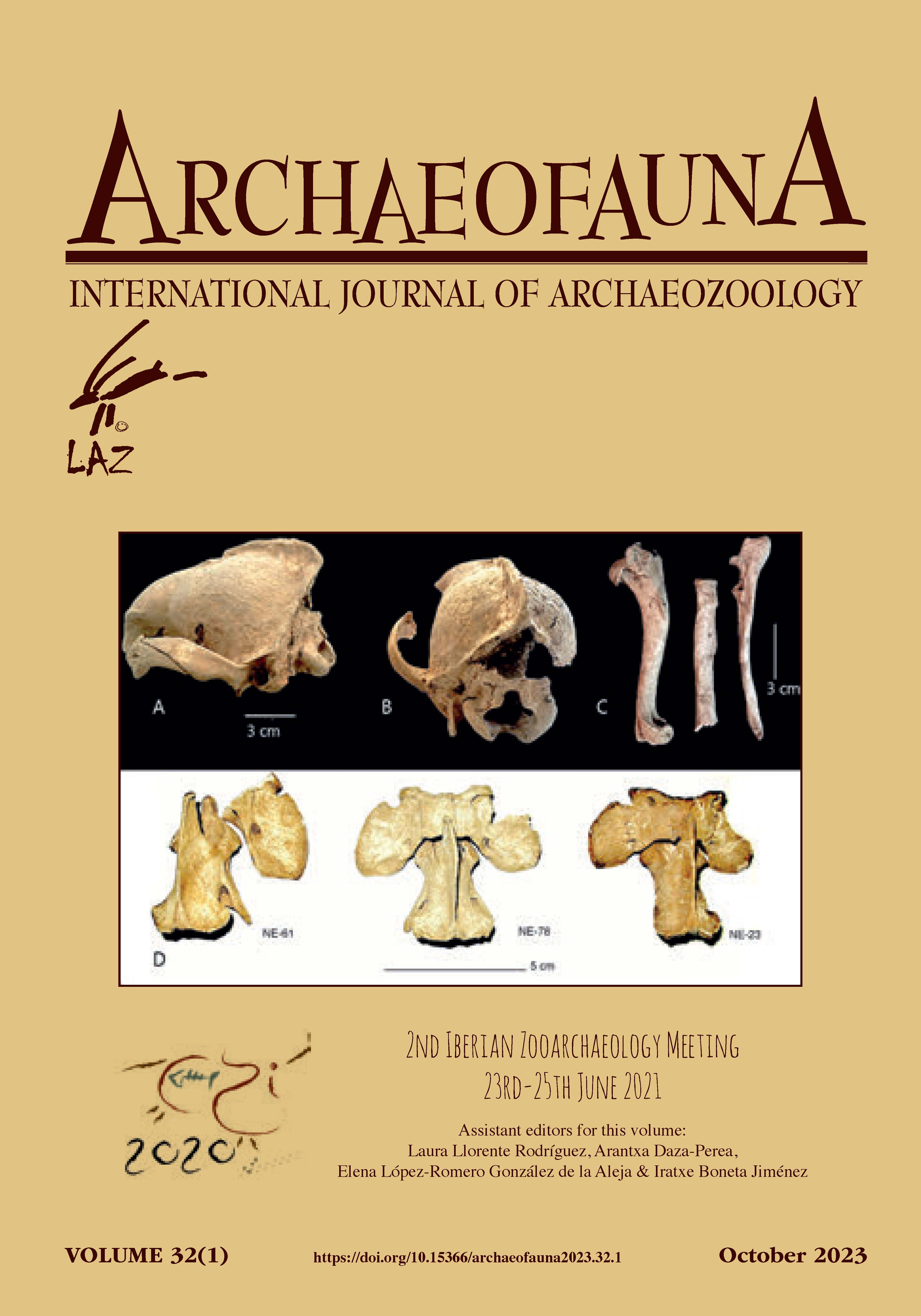Perros enanos en el noreste de la península Ibérica: nuevos datos para su estudio en época romana
Keywords:
northeast of iberian peninsula, roman period, dwarf dogs, paleopathologyAbstract
We present the morphometric and osteopathological analysis of three small-sized (32-38 cm) robust dogs with deformations in the diaphyses and epiphyses (chondrodystrophy) and in the foramen magnum. They come from different sites in the north-east of the Iberian Peninsula. The oldest was found in a silo at the Ibero-Roman site, Serrat dels Espinyers (Isona, Lleida), dated to the end of the 3rd century and the first half of the 2nd century BC. Two more modern ones were documented at Roman sites: one at the CR Empúries necropolis (L’Escala, Girona), dated to the second half of the 2nd century AD and another at the Can Verboom site (Premià de Dalt, Barcelona), dated to the end of the 4th century AD. These cases significantly increase the number of individuals diagnosed so far for this period in this geographical area. Their morphological characteristics allow us to classify them among the most robust and heavy dwarf dogs documented in European canine variability from the Roman colonization onwards. Their exceptional nature is due to the scarce current information on this type of dog in the peninsular territory. At the same time, this work evaluates their possible uses, as well as making some preliminary approaches to their genetic characterization. The possible inbreeding of these populations may explain the permanence of a genetic pathology linked to dwarfism: chondrodysplasia.

